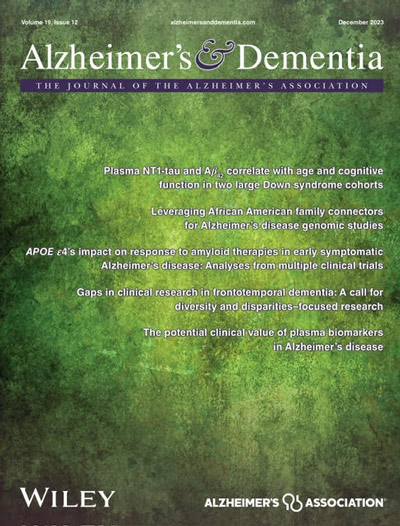Spatial-temporal interactions between white matter hyperintensities and multiple pathologies across the Alzheimer's disease continuum
Abstract
INTRODUCTION
The interactive relationships between Alzheimer's disease (AD) and white matter hyperintensities (WMHs) in multiscale brain structural networks still need to be clarified.
METHODS
Based on subjects enrolled from the Alzheimer's Disease Neuroimaging Initiative (ADNI) database, regional WMHs, amyloid beta (Aβ) accumulation, and microstructural changes detected by diffusion weighted imaging (DWI) in multiscale brain networks were modeled by time-evolving graphs; their interactive relationships were further investigated using Granger causality after constructing pseudo-time subject sequences.
RESULTS
In up to 86% of the extracted pseudo-time subject sequences, Aβ was determined to be the Granger cause of WMHs in the structural connectivity of the inferior longitudinal fasciculus (ILF). Meanwhile WMHs were significantly correlated with microstructural changes measured by reduced fractional anisotropy in the inferior fronto-occipital fasciculus, ILF, and cingulum, which Granger causality pathways detected in 91%, 94%, and 93% of pseudo-time subject sequences, respectively.
DISCUSSION
These findings provide novel insights for understanding the multiscale space-time interactions between WMHs and AD pathologies.
Highlights
- This study proposed time-evolving graph modeling of heterogeneous disease markers (amyloid beta [Aβ], white matter hyperintensities [WMHs], and microstructural changes of white matter tracts) across the Alzheimer's disease (AD) continuum to investigate their complex interactions in multiscale brain structural networks.
- Regional accumulation of Aβ promoted WMH progression in subnetworks connected by the inferior longitudinal fasciculus (ILF).
- Regional WMHs were strongly associated with bundle-specific microstructural changes in the ILF, inferior fronto-occipital fasciculus, and cingulum.
- These results might provide novel insights for understanding the interactive relationship between cerebral small vessel disease and AD.


 求助内容:
求助内容: 应助结果提醒方式:
应助结果提醒方式:


